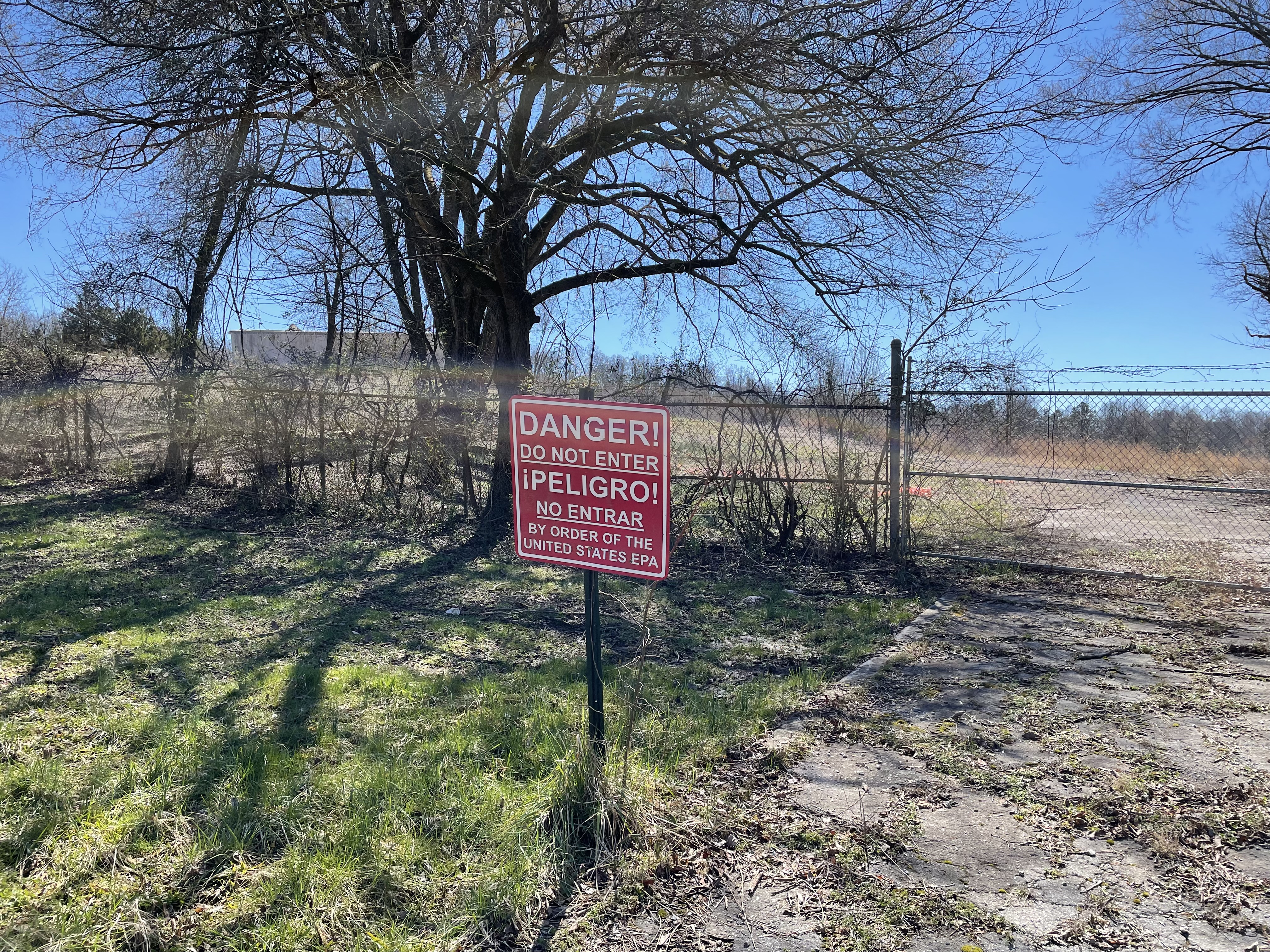Smoky Mountain Smelting
At the meeting, EPA staff provided a handout and presentation outlining the site’s history and EPA plans.
From the 1920s through the 1960s, agricultural and chemical companies operated at the site before Smoky Mountain Smelters, also known as Rotary Furnace Inc., came to the location in 1979.
The company melted scrap aluminum and aluminum dross together to cast the byproduct into aluminum bars. These operations continued until 1994. Even before that point, in the 1980s, the Tennessee Division of Solid Waste Management concluded that the site wasn’t suitable to be an industrial landfill. Yet the company continued to store its waste from the smelting on the site.
EPA Remedial Project Manager Peter Johnson said the dross and saltcakes left over from the process react with water, releasing heat and ammonia gas. They leach aluminum, ammonia, chloride “and many other contaminants,” he said. Smoky Mountain Smelting’s toxins have flowed through groundwater into a tributary of Flenniken Branch. Some including Vestal community resident Cathy Scott have raised concerns about that water reaching the fishing areas at I.C. King Park and eventually the Tennessee River.
In 2010, the Smoky Mountain Smelting site ended up on the federal Superfund list due to its contaminated soil, sediments and surface water. The EPA had already started working on the site in 2008, according to information the agency gave at the meeting, removing some of the onsite waste and capping the remaining waste piles with a foot of clay and six inches of topsoil with grass planted on top.
The EPA plans to start this month and work through November on further measures, funded by recently available federal taxpayer funds from the bipartisan infrastructure bill passed at the behest of the President Joe Biden administration.
First, the EPA plans to combine the waste from the two existing waste piles into one and move some soil there too before restoring wetlands and tributary beds. Then the EPA will put a cap which includes a gas collection layer, two synthetic liners, a drainage layer and a covering of 24 inches total of soil, seed and mulch. This cap is meant to prevent storm water from reaching the waste and having it flow into the groundwater.
Another process includes putting calcium polysulfide and bacteria into groundwater to reduce contaminants and immobilize metals.
Johnson told the audience that parts of the property could become a transportation hub or a place for fixing rail cars.
“We don’t want this to remain fenced and unused,” he said of the property.
Some people in the audience, however, had their own ideas on the site’s future.
“What you’re saying is you’re making this a little better landfill,” one said. “As taxpayers with all these millions of dollars we’re putting in, why don’t we have a say on the property?”
Martin Pleasant, who told Hellbender Press he lives across a set of railroad tracks from the Smoky Mountain Smelting property, said he did not believe the county should sell the property after the EPA’s efforts but rather convert the area into a public park.
“I don’t think we’ll ever recover that from a tax sale,” he said. “I think public use has the greatest value.” When asked about whether he was concerned that children might accidentally unearth toxic material, he said any use might have that risk.
Knoxville City Council Woman Amelia Parker, who also attended the meeting in person, told Hellbender Press afterward she held similar views to Pleasant, preferring a public use. However, she said she’d prefer the waste go somewhere else.
“Ideally we would not have a landfill that we’re maintaining,” she said.
The EPA presenters at the meeting stressed the steps they would take to make sure the site’s protection stayed in place, such as preventing trees from growing their roots into the landfill and breaking the cover.
“The EPA doesn’t just walk away from these sites when there’s waste left in place,” said Rusty Kestle, Environmental Protection Agency project manager for the site.
The rest of Maryville Pike?
While Peter Johnson, Kettle and EPA coordinator Marjorie Thomas talked about the Smoky Mountain Smelting site, others had a broader focus: the other toxic areas along Maryville Pike.
Scott at the same meeting gave a presentation on these areas.
One such site was the David Witherspoon Inc. site at 1630 Maryville Pike. Scott described it as involved with sorting and recycling of “millions of pounds of scrap metal contaminated with radioactive isotopes,” chiefly uranium and thorium. This work took place, Scott said, between 1960 and 1984 for the Atomic Energy Commission which later became the Department of Energy. Other wastes she described on that site included asbestos, PCBs, heavy metals and blood bags and other medical waste.
She also spoke of the Candoro site, also associated with the Witherspoon family but never tested for radioactivity or toxic chemicals. Dax Witherspoon is suing to rezone the site to Heavy Industrial, Scott said.
